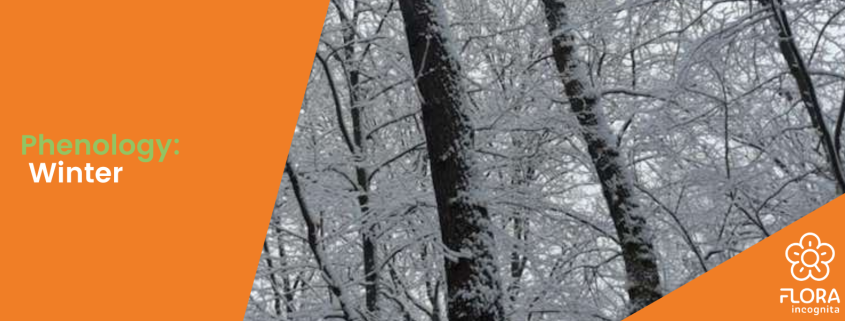Plant cells consist largely of water – if this freezes, it expands. This would damage the cells and, in the worst case, kill the plant. So how do plants protect themselves from freezing to death?
Botanical winter dormancy
The falling leaves of the pedunculate oak, the late-ripening apple and the falling needles of the European larch mark the beginning of the phenological winter. There are warmer days in the Central European climate even in winter, but the plants native here still remain in winter dormancy. The reason for this is the breakdown of certain phytohormones (e.g. abscisic acid), which regulate when seeds and buds (re)sprout after the cold period.
Hibernation as seeds
Annual herbaceous plants die in autumn and only ensure their survival through seeds. These consist of a seed coat, a nutritive tissue and the embryo. Humans use plant seeds as a valuable part of their diet – beans, peas and lentils are rich in protein; wheat and oats provide starch. Some seeds, on the other hand, are high in fat, such as oilseed rape, flax or pumpkin. Their hard shell and low water content protect them from freezing. The duration of dormancy varies greatly among individual plant species, as do the factors that lead to its breakdown. Possible influencing factors are: Humidity, temperature, light conditions and the nutrient content of the soil.
Above-ground withering
Perennials are herbaceous, perennial plants that can survive many winters. Their survival strategy is to store energy-rich nutrients (mostly starch) in roots, bulbs, tubers or the rhizome. New buds and shoots develop from the so-called meristem – a tissue consisting of undifferentiated cells that continuously divide and thus release new cells into the plant body. In winter, these tissue parts often rest as „sleeping eyes“ (botanically: provenance bud) just below the soil surface.
Retreating back into the wood
When deciduous trees show their typical autumn colours, this is a sign that no more new chlorophyll is being produced in the leaves – the constant process of decay is now visibly taking place. Over several days to weeks, the chlorophyll is transferred to the trunk along with other energy-rich particles. The vacuoles therein divide themselves and become enriched with sugar, but also with proteins and other dissolved substances such as potassium, magnesium and phosphorus. Other cell parts – the amyloplasts, become starch reservoirs, which are eventually used up by the time the leaves emerge.
Natural antifreeze
Evergreen plants do not die above ground and keep their leaves. Ice-covered blades of grass don’t break if you step on them – what strategy protects them from freezing? Water freezes at 0° – but not necessarily! Seawater remains liquid because salt, as an osmotically active substance, lowers the freezing point. In plant cells, various sugars, alcohol compounds and also potassium are found as effective antifreeze agents. The more of these molecules are dissolved in the cell water, the stronger the effect of lowering the freezing point.
Cold protection through growth forms
The growth form of the plant also plays a role in frost protection: especially in the high mountains, one encounters dense plant cushions in which the branches stand very closely together. This protects the inner leaves and buds like a blanket from the damaging effects of frost. Plants have found many ways to defy the icy months. But it is also exciting to look further afield! Some plant survival strategies are useful on completely different levels: A
study from England for example, found that a dense growth of ivy
(Hedera helix) can significantly reduce the number, duration and severity of frost damage to historic walls!
This article was displayed as a story in the Flora Incognita app in winter 2022/23. In the app you can always find exciting information about plants, ecology, species knowledge, as well as tips and tricks for plant identification. Check it out!

